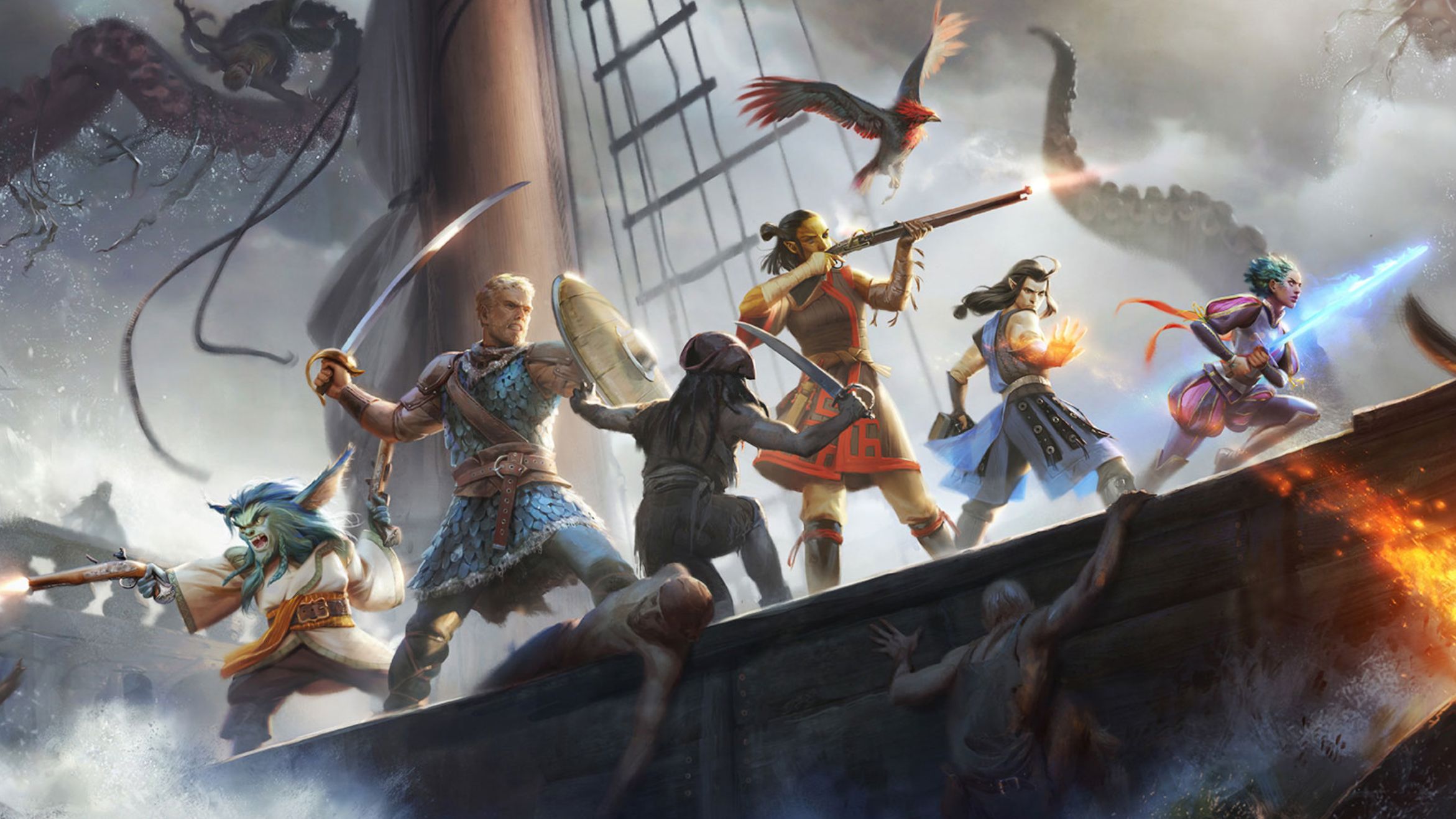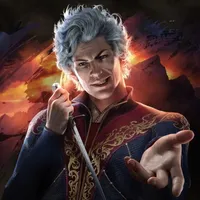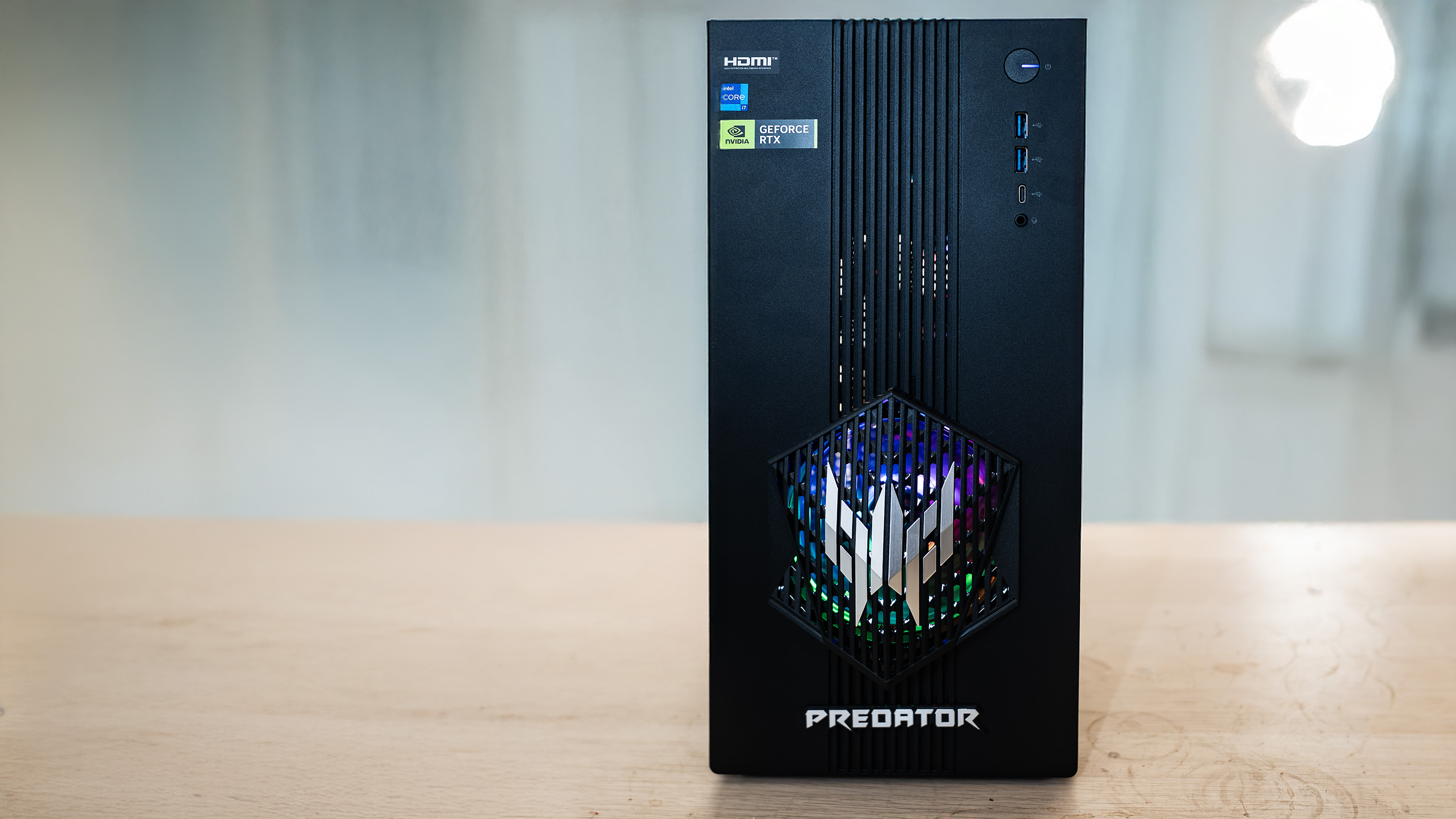Obsidian director Josh Sawyer says it's a 'mistake' for RPGs to sacrifice crunchy 'sweaty boy' systems in favour of a 'one size fits all' game, since easier difficulties aren't too hard to make
"With not a whole lot of effort, but just good planning, we can support a wide spectrum of players."

Dear reader, I need to confess something to you. I have never done a proper playthrough of Skyrim. I've booted the game up countless times, gotten a few hours deep, and felt a kind of malaise drag me away. It's nothing personal—I just need more crunch out of my RPGs. Josh Sawyer, studio design director at Obsidian (who gave us New Vegas and Pillars of Eternity) hears my call.
Speaking to PCG's own Ted Litchfield at GDC this year, Sawyer got deep into the paint on the issue of difficulty and complexity in RPGs—and the back-and-forth pendulum of the CRPG genre as a whole.
"I started—maybe in the middle of the resurgence of PC RPGs, so Fallout had come out, Baldur's Gate came out, I worked on Icewind Dale and Icewind Dale 2, which are nowhere near as big or influential as those titles, but PC RPGin' was pretty good then."
But that golden age of CRPGs wasn't to last—and for a minute, RPGs fell out of favour in the mainstream as the industry's eyes turned to consoles. Despite being about to make a very good point against their design philosophy, Sawyer credits Bethesda's library as bringing RPGs into the spotlight.
"I would say, maybe in 2008, with [Fallout 3/Oblivion]? Then it was like 'woah! RPGs!' Everybody on PC and all of these platforms, you can all play [them] … It was Bethesda that started making that stuff more mainstream."
And yet, as he tells Ted, that crunchiness and reactivity—something that's grown less present in RPG mainstays like The Elder Scrolls and Dragon Age—is something Obsidian's always tried to capture to some degree.
"There is this idea of the 'super accessible RPG'," Sawyer says, before arguing that making an RPG simplistic isn't the way to go about it, and that an RPG "can, and should, be complicated in plenty of ways.
Keep up to date with the most important stories and the best deals, as picked by the PC Gamer team.
"I think we can accommodate different types of players, but it's not with a 'one size fits all thing'. When companies like Owlcat really go crazy on difficulty customization, that stuff is actually great. I'd love it if more of us did that; where we really dive in and say, like, what do you want?
"I'd like us to kind of be a little more thoughtful about that, because I want to support the sweaty boys! I am at least sweaty-adjacent in my own gameplay. If I don't play at the highest level of difficulty, I'm just below it. I do get annoyed when I play a game and there's nothing there for me to tinker with.
"I do also understand that a lot of people have a lot of fun just cruising around—they like level scaling, they like things being a slip 'n' slide … I appreciate that, and I think with not a whole lot of effort, but just good planning, we can support a wide spectrum of players."
It's not that it's no work, but it's not as much work as you might think if you put the time into it."
Josh Sawyer
Supporting them, however, doesn't involve taking away the focus on crunch, choice, consequence, and mature storytelling that the so-dubbed sweaty boys enjoy: "I think it's especially a mistake when we sacrifice that stuff in the name of accessibility."
Sawyer then goes ahead and lists a series of RPG mainstays that I do, as a sweat-dabbler myself, enjoy. It's enough to have me feeling downright patriotic:
"The hardcore faction of RPG gamers, they still like the same things. They like the crunch. They like making difficult choices. They like having a lot of gear to look at and mess with, and they like customization options. They like reactivity. They like more mature storytelling, and I appreciate all that stuff.
"I think that if you make systems that can do all of that, you also can make systems that support scaling and like, collapse in on themselves and simplify those things, right? It's not that it's no work, but it's not as much work as you might think if you put the time into it."
Sawyer admits that Pillars of Eternity 2: Deadfire took a bit of post-launch tuning to get to that point but, overall, he was happy with the higher spectrum of challenge and depth the game offered. And yet: "[In] the 'Story Time' Mode, it's almost impossible to die, and it wasn't really a huge amount of work to support that."
In other words? Both. Both is good: "I wouldn't say I'm the expert on tuning, but I think there's room to support (within a single game) both real serious, crunchy challenge, tactical combat, and also thoughtfully say, 'You know what? If you just want to cruise through this, and just kind of see the sights and go through the story, we can do that for you too. It's okay.'"
Baldur's Gate 3 romance: Who to pursue
Baldur's Gate 3 multiplayer: How co-op works
Baldur's Gate 3 endings: For better or worse
Baldur's Gate 3 multiclass builds: Coolest combos
Best RPGs: The greatest you can play now

Harvey's history with games started when he first begged his parents for a World of Warcraft subscription aged 12, though he's since been cursed with Final Fantasy 14-brain and a huge crush on G'raha Tia. He made his start as a freelancer, writing for websites like Techradar, The Escapist, Dicebreaker, The Gamer, Into the Spine—and of course, PC Gamer. He'll sink his teeth into anything that looks interesting, though he has a soft spot for RPGs, soulslikes, roguelikes, deckbuilders, MMOs, and weird indie titles. He also plays a shelf load of TTRPGs in his offline time. Don't ask him what his favourite system is, he has too many.
- Ted LitchfieldAssociate Editor
You must confirm your public display name before commenting
Please logout and then login again, you will then be prompted to enter your display name.


